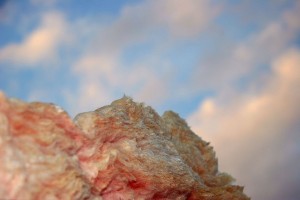 Fiberglass insulation is an insulation procedure that uses man-made fiber to regulate the inflow and outflow of heat and sound in buildings. It comprises of bundles of thin strands of recycled glass that makes it lightweight due to high surface area-to-weight ratio. Since these materials are mostly recycled, the fibers are inexpensive to manufacture and, therefore, that makes fiber insulation to be cost-effective. Many residential and commercial buildings have fiberglass installed on their walls and ceilings during construction. Before the inception of fiberglass, most premises used asbestos as the standard insulating material. Through the years, fiberglass insulation has gain popularity due to the many advantages it has over other insulating materials.
Fiberglass insulation is an insulation procedure that uses man-made fiber to regulate the inflow and outflow of heat and sound in buildings. It comprises of bundles of thin strands of recycled glass that makes it lightweight due to high surface area-to-weight ratio. Since these materials are mostly recycled, the fibers are inexpensive to manufacture and, therefore, that makes fiber insulation to be cost-effective. Many residential and commercial buildings have fiberglass installed on their walls and ceilings during construction. Before the inception of fiberglass, most premises used asbestos as the standard insulating material. Through the years, fiberglass insulation has gain popularity due to the many advantages it has over other insulating materials.
Currently, fiberglass insulation is the most widely used insulation in both commercial and residential buildings. There are many reasons and considerations attributed to this popularity. First and foremost, fiberglass is relatively lightweight and inexpensive to produce. It also has numerous intrinsic qualities that make it stand out as an excellent insulating material. The many bundles of fiber are perfect at trapping heat.
Benefits of Using the Fiberglass Insulation
In terms of cost, fiberglass is cheap and affordable compared to other insulating materials. Actually the cost of its insulation depends on the thickness and the R-value. The R-value of many insulation materials range between 11 to 38, and fiberglass insulation can meet any of the R-value between those ranges.
Apart from it being affordable, installing fiberglass insulation in your home can cut down your energy bills especially the cost of heating and cooling. The insulation works by trapping heat during the winter and cool air during the summer. This improves the energy efficiency in your home as well as preventing energy loss. Without it, the warm and cool air would quickly escape leaving your home very uncomfortable. Consequently, you would have to use air conditioner throughout the day and night that might not even be effective. During winter, the heater would be on all through and this would result in higher heating bills. Therefore, installing the fiberglass insulation will reduce these energy bills by a large margin hence saving you the money you would have spent on paying the bills.
Another significant benefit of this insulation is its resistance to fire. Fiberglass insulation is completely fire resistant reducing the chances of your home burning down completely. Using other types of insulation can encourage flames to spread increasing the chances of your house getting destroyed by fire.
The last benefit of fiberglass insulation is its ability to absorb noise. This is beneficial especially in homes where kids like playing instruments or listen to the stereo. The insulation absorbs the noise and, therefore, the entire neighborhood won’t have to listen to blaring music.
Tips on Handling the Fiberglass
It is advisable to wear gloves and masks when handling fiberglass during the installation. If it is possible, you can hire a professional to install the fiberglass for you. If you decide to do it yourself, avoid breathing it in or getting it on your hand. Also don’t use plastic to cover it because it can trap moisture and probably cause mold moisture. Fiberglass is versatile, and you can install it in any area of your house. You can install it on your ceiling, between wall spaces and other places that you see fit. In case you are not sure, you can always contact a professional to assist you in installing it. Another type of insulation material is spray foam.